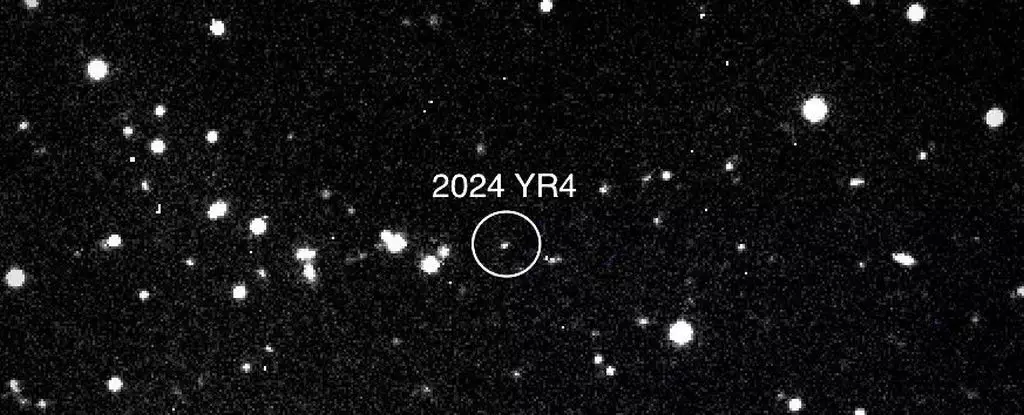Just when we felt a sense of security, at least regarding imminent planetary threats, asteroid 2024 YR4 re-enters our collective consciousness. This celestial rock might seem like an insignificant blip on the vast cosmic radar, but its presence serves as a reminder of our delicate existence in a universe that occasionally throws us curveballs. In its latest assessments, scientists have indicated that 2024 YR4 doesn’t pose an immediate danger to Earth as its projected collision probability remains a mere 0.001 percent. However, in a world rife with uncertainties—including political, social, and environmental—we must grapple with whether such minuscule risks should afford us a comfort that may be altogether misguided.
Misplaced Complacency: The Illusion of Safety
Many may breathe a sigh of relief upon hearing that the impending doom of 2024 YR4 has been effectively sidelined for Earth. Yet, the underlying question arises: what of our lunar neighbor? Planetary astronomer Andrew Rivkin from Johns Hopkins University highlights a worry that, while we face little danger from the asteroid crashing into Earth, it remains poised to potentially impact the Moon. The reality is, should that happen, the repercussions could be as tremulous as Edvard Munch’s infamous painting, “The Scream.” Continuing to downplay the possible implications of celestial bodies in our solar system could lead us into a false sense of security that not only jeopardizes scientific integrity but also neglects to educate the public about genuine risks.
The Fragility of Knowledge: Navigating Unknown Outcomes
The deep-seated anxiety surrounding 2024 YR4 underscores the necessity for ongoing research. With the asteroid’s next close approach scheduled for December 2032, scientists are racing against time to gather further observational data. Much like navigating the political landscape where perceptions often clash with facts, cosmic research demands precision in the face of uncertainty. Yes, the chances are low, but as history has proven time and again—from ecological shifts to geopolitical unrest—the unexpected often springs from seemingly non-threatening situations. The concept of a celestial rock crashing into the Moon may sound surreal, yet it’s a possibility that could unsettle our fragile ecosystems in untold ways.
The Heavy Cost of a Celestial Incident
The potential consequences of an asteroid collision are even more chilling when laid bare. The energy released from an impact could range from 2 to 30 megatons, with effects more potent than some of the most devastating bombs in history. One only needs to contemplate the historical Tunguska event to understand the destruction that could echo across vast landscapes. Such thoughts may lead one to ponder the prioritization of space research and monitoring; are we devoting enough resources to safeguard not only our planet but also its accompanying celestial bodies? In a world where political agendas often dictate funding, should we not see space awareness as a pressing priority rather than a luxury?
The Path Ahead: Embracing Uncertainty
As we look forward to upcoming observations and data from the James Webb Space Telescope in May 2025, we must collectively embrace a mindset that acknowledges uncertainty without succumbing to panic. Science thrives on unanswered questions and ongoing inquiry; it invites skepticism even when the outlook appears bright. Continued study of 2024 YR4 is essential, both for its routine cosmic behavior and as a familiar token of the innumerable unknowns we face, whether in space exploration or governance.
By remaining engaged in the cosmic narrative surrounding 2024 YR4, we not only cultivate a sense of collective awareness about our planetary defenses but also foster a mindset capable of interlinking scientific foresight with pragmatic action. In an era where global crises demand an interconnected approach, perhaps we can draw lessons from the heavens above and keep our gaze firmly fixed on confronting the challenges that lie ahead—both terrestrial and celestial.



Leave a Reply